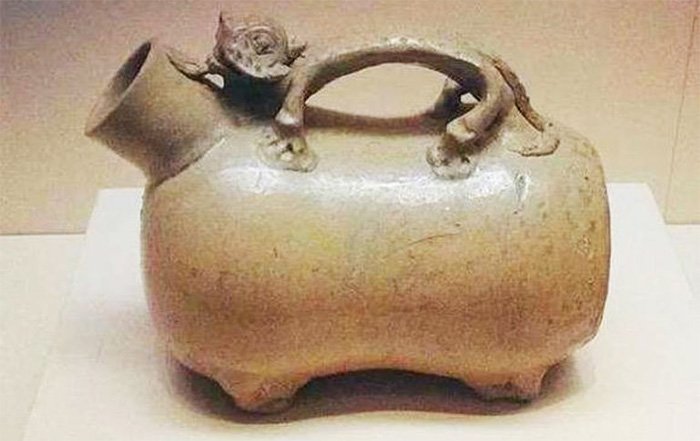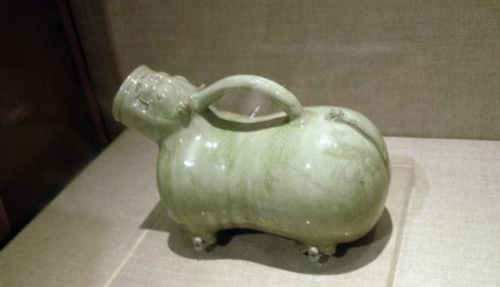Interesting things around the excavated artifact were experts mistaken for potty
Chinese history is vast and profound, with countless cultural remains left over thousands of years of history.
Determining the intended use of antiques or ancient cultural relics is also considered a difficult test. Sometimes based on expert experience only, judgments can be misleading.
In 1995, at Zhao Thoangang (Zhaotugang) in Nanjing, archaeologists discovered an ancient tomb of the Wu state during the Three Kingdoms period. Among the excavated cultural relics, an artifact shaped like a jug with a handle has caught the attention of experts. This cultural artifact is the "tiger stick of death".


Thanh tu tiger.
Tiger root bar has a height of 15cm, about 20cm long, round mouth and 45 degrees tilt. Initially, domestic experts all agreed that it was a night potty for men in ancient times, because of its very similar appearance. For a long time, everyone kept this consensus until some time later, when 13 jars were discovered carved into the abdomen of the jar.
The thirteen words on the belly are "the chain of the four fathers of the millennium God Ngu Vien Vien Nghi" . In it, Ox Xich is the age of Ton Quyen - or also Trong Trong, also known as Ngo Dai De, the founder. of the Eastern Wu regime under the Three Kingdoms period in Chinese history, the fourteenth year of the Red Ox is 251 A. Yuan Nghi was an artisan crafting porcelain works on tigers. There are precious and sophisticated new items engraved with the craftsman's name and production time.
After the peak of the Three Kingdoms, the development of agriculture led to the development of ceramics and porcelain demand. In addition, the area around the middle of the Tao Nga River is rich in porcelain soil and fuel, convenient transportation, leading to the rapid development of porcelain production, and has opened the golden age of the five tide. Tang Dynasty. At that time, in Thuong Ngu (Thieu Hung, Triet Giang), the origin of porcelain, many famous porcelain masters such as Vien Nghi, Pham Huu Kha, and Ba Ba appeared. A large number of their works have been unearthed in Nanjing, the capital of six dynasties, and neighboring counties and cities.
This 'tiger bear' artifact is the earliest pottery style found to date. Thirteen characters, integrating the year, the location of the furnace and the name of the furnace worker, are an important basis for determining the existence of the "official kiln" of the porcelain industry.
At the moment, the tiger tigress is collected in the National Museum of China and is a national treasure of cultural heritage. Because there are still many unexplained mysteries surrounding this artifact, to prevent damage during transportation, the National Office of Cultural Relics Management has banned exhibitions abroad.
- 10 interesting things about life you may not know
- 10 interesting things about nature you may not know
- Strange statistics about human life
- Going from one surprise to the other is different from the interesting things about all things
- Interesting things about chili
- Super interesting things about math you will definitely fall back
- Animal World - Interesting things you don't know
- 12 horrible things about China you may not know
- 10 interesting things about cats
- 10 interesting things about the Internet that you don't know
- Discover interesting things about rain
- Some interesting things about eclipse
 Discovered an ancient centipede fossil 99 million years old
Discovered an ancient centipede fossil 99 million years old Discovered bat-like dinosaurs in China
Discovered bat-like dinosaurs in China Discovered a 200-year-old bronze cannon of the coast
Discovered a 200-year-old bronze cannon of the coast Discover 305 million-year-old spider fossils
Discover 305 million-year-old spider fossils